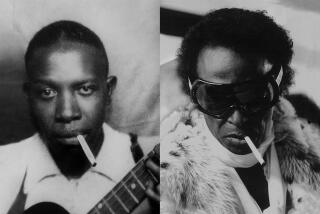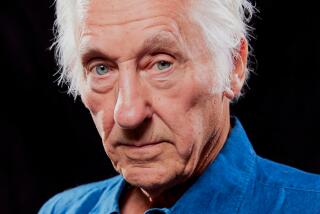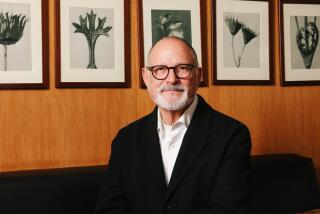Regaining Uncommon Ground : Cal State Fullerton Student Organizes ‘Heritage,’ Three Installations by Five Southland Artists
- Share via
FULLERTON — John Karwin thinks personal identities should be determined less by ethnicity or culture than by individuals’ unique, vastly differing life experiences.
A graduate student at Cal State Fullerton, he has organized “Heritage Regained,” an exhibit exploring the topic. On view through Dec. 13 at the university’s Main Art Gallery, it contains three installations by five Southern California artists.
“When we talk about heritage, we often talk about our ethnic or cultural background,” Karwin said during a recent telephone interview. But “particularly in Southern California, we use our ethnic backgrounds to divide the population into groups. . . . We are unable to feel like we are all part of one human race.
“It’s important to affirm our ancestry and heritage,” he continued. But if identity is defined instead by one’s memories, knowledge and experiences--never the same from person to person--”we’re moving toward a more common heritage of (everyone) being different, rather than being (segregated into) groups of similar people.”
Karwin, earning his degree in exhibition design, co-curated a similar show on campus in 1990 with fellow graduate student Patricia Watts. For the current exhibit, his master’s thesis, he asked Kim Yasuda of Santa Barbara and Mark Teresa of Los Angeles to create separate installations and Mary-Linn Hughes, Reginald Larue Zachary and Karen Lee C. Akamine of Huntington Beach to collaborate on one.
“Installation art,” he says, “aspires to deal with real issues that affect real people,” not just art world insiders.
Yasuda, whose work often charts a search for her own roots, probably best represents the idea that identity can be much more complex than skin color, Karwin said.
Born of Eurasian parents, she was adopted by Japanese-Americans, has never met her natural mother and doesn’t know if her natural father is alive. She continues to seek them.
Her characteristically minimalist, Zen-like installation, “Neither Here Nor There,” weaves together her search for self and elements of Nathaniel Hawthorne’s “The Scarlet Letter.” Its nucleus is a piece of flowing white fabric bearing an embroidered red letter A. In the same way that the letter branded Hawthorne’s heroine Hester Prynne as an outsider, Yasuda’s A represents the mix of traits--adopted, artist, Asian--that “make her an outsider,” Karwin said.
“All those things are labels that apply to Yasuda, but are also misleading”--just as, in the book, Hester is more than an adulteress, Karwin continued. As Yasuda added during an interview at the gallery, Prynne’s A also could stand for “able, apostle and angel.”
Teresa has created an installation that reflects his background in architecture and psychology as well as assemblage art, Karwin said. “The Thing Itself Moves Freely” consists of several separate “environments,” including three large wooden bird cages that will house live finches and a variety of found objects, from photographs to a map.
The idea, Karwin explained, is that environment shapes identity. “Our identity is determined by the information available to us, and the same information can be seen by others and interpreted in completely different ways.”
Teresa, who worked for years with renowned assemblage artist George Herms, added that “each environment has its own personality (and represents) things or people from my past that have influenced me,” particularly Herms and his use of found objects.
For their installation, Hughes, Zachary and Akamine interviewed Fullerton high school students about identity, asking about ethnic and cultural heritage, asking when they felt connected to others and when they felt “powerful or brilliant,” Zachary said.
The artists audiotaped the interviews, which are replayed as viewers walk through the installation, a two-room, house-like structure. They picked a house, they said, because they say memories of early experiences at home have a profound effect on personal identity.
They hope the piece will provoke viewers to reflect on those experiences. Its title: “Stand in the Remembering of Who You Are.”
“We have a society that’s based on disequality, where we’re conditioned to forget who we are and to forget our heritage and power and brilliance and connectedness to each other,” Hughes said. “We created a space where people can come and remember those things.”
* “Heritage Regained” continues through Dec. 13 in the Main Art Gallery at Cal State Fullerton, 800 N. State College Blvd., Fullerton. Hours: noon to 4 p.m., Mondays through Fridays; 2 to 5 p.m. Sundays. Admission is free or by donation. (714) 773-3262.
More to Read
The biggest entertainment stories
Get our big stories about Hollywood, film, television, music, arts, culture and more right in your inbox as soon as they publish.
You may occasionally receive promotional content from the Los Angeles Times.










